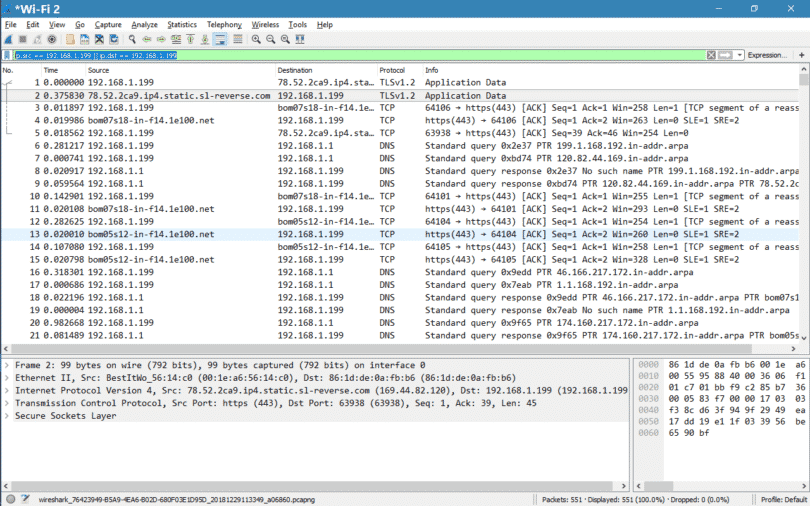

The steps to configure a capture filter are the following: The capture filter must be set before launching the Wiershark capture, which is not the case for the display filters that can be modified at any time during the capture. The capture filter syntax is the same as the one used by programs using the Lipcap (Linux) or Winpcap (Windows) library like the famous TCPdump. The display filter is much more powerful (and complex) it will permit you to search exactly the data you want. The capture filter is used as a first large filter to limit the size of captured data to avoid generating a log too big. The goals of the two filters are different. So should I use the capture or the display filter? They can be modified while data is captured.
Wireshark filter destination ip install#
Wireshark it’s available in official repository of Ubuntu 10.04, so to install it just do a : sudo aptitude install wireshark people use it to learn network protocol internalsīeside these examples, Wireshark can be helpful in many other situations too.

developers use it to debug protocol implementations.network security engineers use it to examine security problems.network administrators use it to troubleshoot network problems.

Here are some examples people use Wireshark for: Trace files captured from your network can be opened in Wireshark and analysed right down to individual packet level. It provides low-level packet filtering and analytical capability. Wireshark (formerly known as Ethereal) has become the defacto, open-source standard for protocol analysis. In this first article i’ll show you Wireshark an useful tool for network analysis. Indeed, several open source solutions are truly effective and can help the specialist networks in daily work. Like the screen dumps shown above in the procedure.On the Internet there are hundreds of excellent open source tools and utilities that can be used for network analysis, but not many technicians use them. What is contained in this data field? (10 marks) ICMP echo reply: a) Compare the message identifier and sequence number in the reply message with the equivalent numbers in the request message.(5 marks) b) Recognize the data bytes in the reply message and compare the data sequence with that in the request message.(5 marks) c)To support the above questions 1 \& 2, please provide screen dumps of the Wireshark packets you have captured.i.e. c) Identify the data bytes in request message and note the corresponding character sequence in third pane of Wireshark window. Why? b) Study the ICMP message and what are the fields does ICMP packet have? Check the number of bytes for the checksum, sequence number and identifier fields. ICMP packet doesn't have source and destination port numbers. ICMP echo request: a) Examine the protocol type and time to live fields in the IP packet that carries the first ICMP Echo Request. The screen shot of Wireshark output after filtering the 'icmp' messages.


 0 kommentar(er)
0 kommentar(er)
